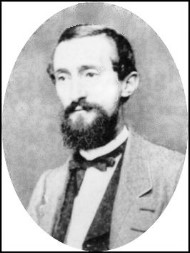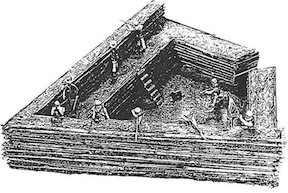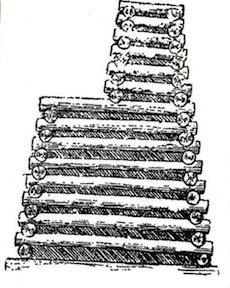The Road to Atlanta: The Untested Line of Francis Shoup

As Joe Johnston began to first occupy the Kennesaw Line, Gen. Francis A. Shoup, the chief of artillery for the Army of Tennessee, proposed to his commander that a strong defensive line be built along the north bank of the Chattahoochee River in case they were forced to retire again. Johnston approved, and soon Shoup was working on the line using engineers and around 1,000 impressed slaves.
For more than two weeks, Shoup and the engineers oversaw the labor of the slaves, creating a fortified line unlike any other seen during the war. Sherman later called it the “strongest pieces of field fortifications I ever saw.”
The line Shoup constructed was a defensive masterpiece, a line so strong that it would deter a frontal assault, yet it could be manned by a small force. That would enable the Confederates to have a substantial reserve force that could be sent to counter any attempt to flank the position.

From above, the line looked like a jagged zig-zag. At the tip of each was an arrowhead-shaped fort—which became known as Shoupades—that could hold 80 infantrymen. The soldiers had fields of fire to their front and were able to enfilade any assault to their left or right. The walls of the forts were made of logs on the outside and inside, with dirt filling several feet in between. Each stoof between 15 to 20 feet high.
A line of regular entrenchments connected the forts, drawing back at an angle to a redan that held a section of artillery. The idea was to have the line funnel any attack into the jaws of the cannon.

When Johnston’s men finally occupied the line, the men were skeptical and, not understanding the works, tore many of the Shoupades down to construct the regular lines they were used to, though others were convinced to leave them as they were.
However, the line was never tested. Sherman confronted the line and held the main force in place, while he once again flanked the position on July 9.
A few of the Shopades remain intact today—thelast legacy of Francis Shoup’s novel idea and another lost opportunity for the Confederates on the road to Atlanta.
Operative words being, “. . . he once again flanked the position . . .”